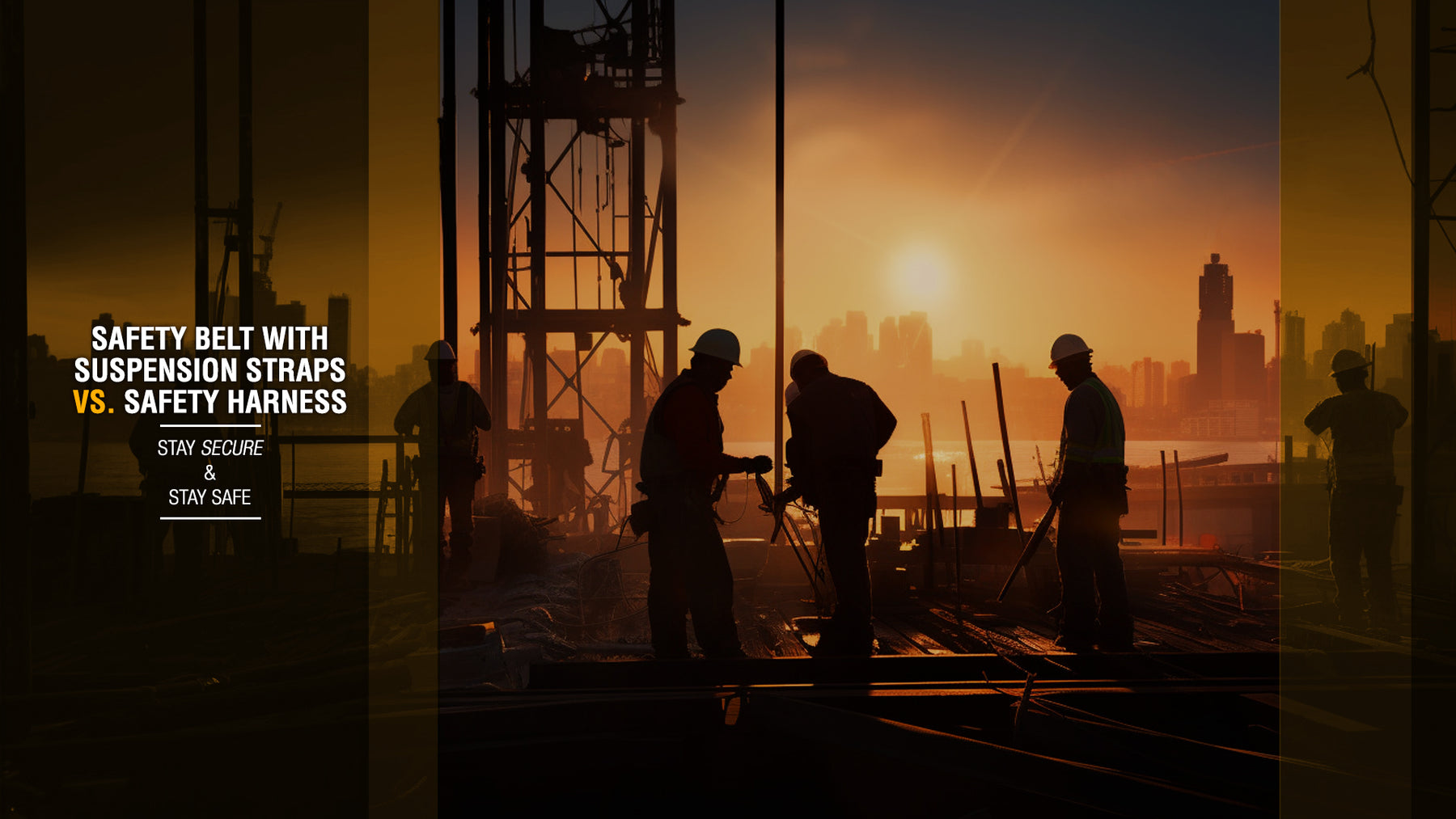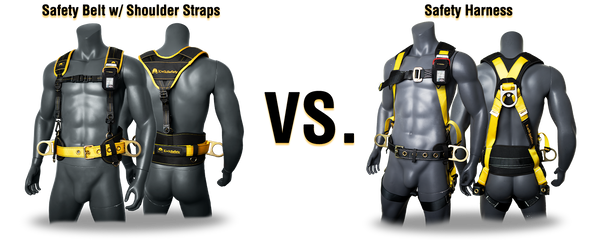Free Shipping ($25 min) | 30 Day Returns
Free Shipping ($25 min)
30 Day Returns

A safety belt with suspension straps may seem like an alternative to a safety harness, but it is not safe to use as a substitute. While it may provide some level of support and security, it lacks crucial features that ensure maximum safety for workers at height.
In this blog post, we will talk about the differences between a Safety Belt with Suspension Straps and a Fall Arrest Safety Harness.
We will also list off what our new Safety Belt with Suspension Straps can be used for
A safety harness is specifically designed to distribute the forces of a fall evenly across the body, minimizing the risk of injury. It consists of a full-body harness that securely straps around the worker, distributing the impact of a fall across the shoulders, chest, hips, and thighs. This design helps to prevent severe injuries, such as internal organ damage and compression of the rib cage.

In contrast, a safety belt with suspension straps is a specialized device designed to provide support, stability, and proper positioning for workers. This belt typically consists of a wide strap that wraps around the waist with d-rings on the sides that attach to an anchor point and adjustable shoulder straps that are connected to a central point on the back. The shoulder straps connected to this safety belt provide support and help distribute the belt's weight more evenly. The purpose of this device is to enhance safety by ensuring proper alignment and stability, allowing individuals to maintain an upright posture. While it may provide stability and allow for hands-free work, it lacks the comprehensive protection offered by a safety harness.
Here are a 4 important reasons why a safety belt with suspension straps is NOT a safe alternative to use in replace of a safety harness:
Lack of Full-Body Support: A safety belt with suspension straps only provides support around the waist area, leaving the upper and lower body vulnerable in the event of a fall. This limited support can lead to serious injuries, as the forces of impact are concentrated in a smaller area of the body.
Potential for Suspension Trauma: In the event of a fall, a worker wearing a safety belt with suspension straps may become suspended in an upright position. Prolonged suspension in this position can cause suspension trauma, also known as harness-induced pathology, which can lead to a loss of consciousness or even death due to the restriction of blood flow to the legs.
Inadequate Fall Arrest System: A safety harness is equipped with a shock-absorbing lanyard or self-retracting lifeline that helps absorb the impact of a fall, reducing the forces transmitted to the body. A safety belt with suspension straps lacks this critical component, which significantly increases the risk of injury in the event of a fall.
Compliance with Safety Standards: Occupational safety regulations and standards typically mandate the use of safety harnesses for working at height. Employers are responsible for ensuring the safety and well-being of their workers and are expected to adhere to these regulations. Using a safety belt with suspension straps instead of a safety harness may not comply with these standards, potentially exposing workers and employers to legal and financial liabilities.
A Safety Positioning Belt with Suspension Straps is a high-performance positioning belt made up of 2 major components:
Shoulder Straps, or Suspension Straps, on a Safety Belt enhance comfort and reduce the risk of musculoskeletal strain.
Here are some ways in which shoulder straps contribute to ergonomic support:
A Safety Positioning Belt, also known as a work positioning belt or tool belt, has various applications in the work industry.
Here are some common uses:
**It's crucial to note that the specific use and features of safety positioning belts may vary depending on industry regulations, job requirements, and workplace hazards. Therefore, it is essential to adhere to industry standards and guidelines, as well as receive proper training on their correct usage, inspection, and maintenance.**
__________________________
In conclusion, while a safety belt with suspension straps may provide some support and convenience for ironworkers, it should never be considered a substitute for a safety harness. The comprehensive protection, full-body support, and fall arrest capabilities provided by a safety harness are essential for ensuring the safety and well-being of workers at height.
Follow us on social media to stay up-to-date on new products and much more!
{"one"=>"Select 2 or 3 items to compare", "other"=>"{{ count }} of 3 items selected"}
Leave a comment